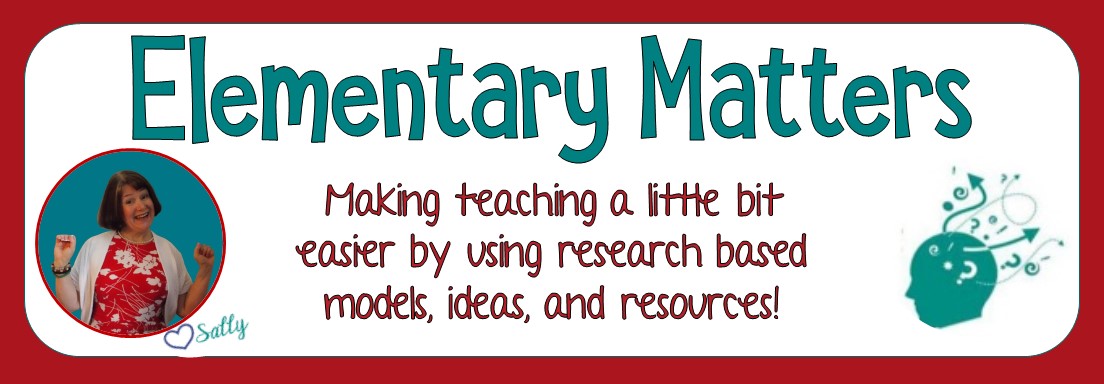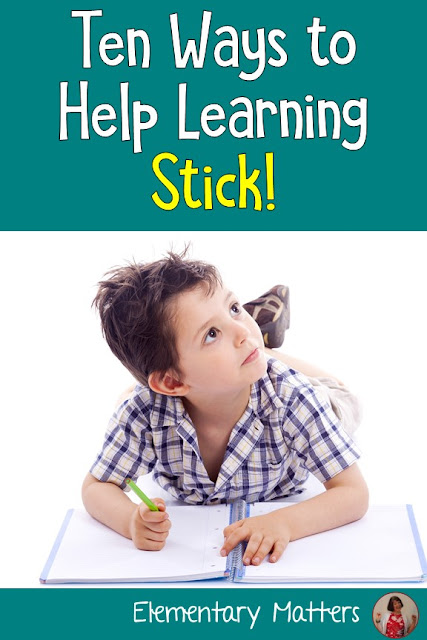I've been interested in how the workings of the brain for many years now. I've read tons of books, articles, and videos. I'm hardly an expert, but a lot of the information I read about really makes a lot of sense!
Here are ten ideas that are research based, and help me out in the classroom!
1. Move! Studies show that combining movement with learning helps learning stick! There are plenty of ways to include movement. I like to include a gesture when I teach a concept, and have the children mirror the gesture. Trust me, they come back years later repeating the gesture!
 |
Here are some of my darlings acting out one of the Author's Purpose reasons: Entertainment!
2. Feedback! Children need to know if they're on the right track! I use a "Traffic Light" symbol when I correct papers.I'll highlight the child's name in green if they're doing what's expected at grade level. I'll highlight in yellow if there's something they need to be careful about. (Usually there's a written note.) I'll highlight in red (or pink, it's a little more "gentle,") if they need to stop and revisit the idea. (Usually there's a personal conversation, too.) Plus, there's one more color: if the work is "above and beyond grade level expectations," I'll highlight in purple. Of course, purple is for royalty, and I've been known to bow to children who pass in this sort of work!
3. Talking! Yes, students need to talk and have social experiences! Since I work with little ones with short attention spans, I include loads of "Turn and Talk" time! I often pose a question for discussion with a partner. The question might be a review, or a query, or maybe a prediction. It's tough not to be engaged when they're involved in conversation with their peers! Plus, when I listen in, I can tell if they're learning what they are suppose to be learning, or not! That gives me feedback on my teaching, too!

4. Humor! Did you realize that laughing is actually healthy? It brings oxygen to the brain and minimizes stress, which is bad for learning. It's time to pull out the joke books and get those kids laughing!
5. Stories! Kids remember your stories! They love to hear about your family, your pets, and they especially love to hear about when you were little! HERE is a link to a story I often tell my students about my first day of school ever. I tell it to the kids as a model to show them how to write about their lives.
6. Emotions! I'm sure if you think of times where you felt strong emotion, you'll have strong memories as well. The above link tells about a strong emotion for me. Don't most people remember their weddings, the day their children were born, and, unfortunately, the death of a loved one. That's proof that our memories are tied to our emotions. Luckily, with kids, a little friendly competition or exciting situation will do the trick! I'll bet you remember that class play in third grade, and the Spelling Bee in 5th grade! Just be careful... bad emotions bring strong memories as well!

7. Music! How many of you remember all the words to the Brady Bunch Theme Song? I'll bet you never even had to work at it! I've written simple songs with simple lyrics to help the children remember important facts, such as The Seven Continents. (See THIS post for lyrics.) I also use music to set the mood as they enter the classroom, and I use classical music in the background to help the children focus.
8. Brain Breaks! Studies show that children can attend only their age plus or minus 5 minutes, with 20 minutes total for adults. After that time, they need time to process the information so it can work its way into the long term memory. I'm sure you can find plenty of ideas for brain breaks.
9. The Five Senses! Studies show visual trumps all the other senses. If you pair knowledge with some sort of visual, it has a better chance of sticking. It's also been said the way to a child's heart is through their stomach! Teaching about a country? Serve some food from that country! Teaching estimation? Estimate lollypops! Here's something I did to help the children remember to put spaces between their words.
10. Integrate the Arts! I've already mentioned music, but integrating other arts has been known to ignite a passion for learning. Dramatics, dance, clay, painting, drawing, and photography are great ways to help learning stick! I'll bet you can even think of more varieties of the arts, and how to connect them to learning!






What a fantastic post! I love traffic lighting and find it works very well for a variety of grades. I will have to spend more time on your brain breaks pinterest board. I feel this is an area where I always am looking for new ideas.
ReplyDeleteTara
The Math Maniac
Sally, these are great tips!! I have never thought of the different colors for highlighting their names to let them know how they are doing. I'm pinning this for you!
ReplyDeleteLori
Conversations in Literacy
Thanks for these great ideas - I just printed them out so I can refer to them later!
ReplyDeleteSara
Awesome post. So cool that you implement these with your students. They are lucky to have you.
ReplyDelete